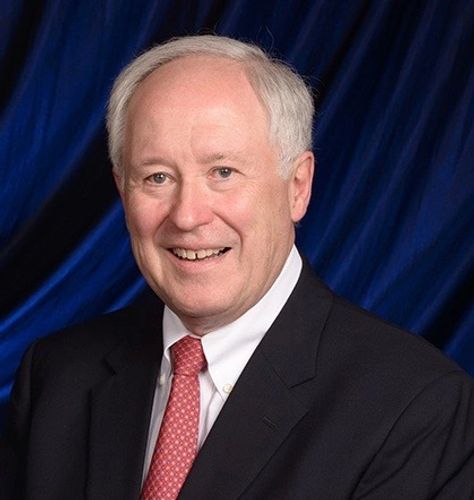
Northern Kentucky healthcare and the bygone St Luke Hospital
As a physician who attended many patients in Northern Kentucky for nearly 40 years, I witnessed massive change not only in the institutions of care but also in the healthcare delivery process.
Recently, patients and friends asked about COVID 19 and why, considering the many recent advancements in healthcare, can we not find a fix for the Coronavirus pandemic. Covid-19 is the single most significant health disaster in most of our lifetimes and the most life disruptive event since World War II. The epidemic has stressed the healthcare system to its limits as we await the development of effective treatment and vaccines for this dreadful infection.
In this and subsequent articles, I will explore some of the significant advancements in medicine as well as the political, financial, and social changes in healthcare over my 50-year healthcare career. In this article, I will look at the bygone era of St Luke Hospital and healthcare in Campbell County, Kentucky.
I joined the St Luke Hospital Medical Staff in 1973. During the subsequent 37 years, I attended many patients at St Luke and served in a variety of physician leadership roles. I was a member of the St Luke board of trustees for 23 years, until the St Luke-St Elizabeth merger in 2010. In the early 1970s, many young, recently trained physicians joined the St Luke medical staff. These new physicians were primarily from the University of Cincinnati and the newly organized St Elizabeth Family practice residency program. Many of these early 1970s physicians were Vietnam War veterans. These new arrivals included Primary Care physicians (Ex: Jerry Dempsey, Todd Cook, Bob Sopko, Doug Miles, Gary Seward) as well as specialists (Ex: Mike Grefer, John Pancoast, Joe Creevy, Ed Elicker, Joe Haas, Bob Lorenz, Bill Monnig, Larry Brennan, George Hall, Jeff Russell, Jim Bilbo, Bill Danneman, George Miller, Charles Allnut). Many others joined the St Luke staff in subsequent years. Along with this new generation of physicians, came new ideas, new technology, and innovation.
Before the arrival of the new generation of physicians, the Medical Staff at St Luke consisted of physicians of the World War II generation. That “Great Generation” group of physicians was responsible for the beginning of modern healthcare in Campbell County after the closure of Speers Hospital in Dayton, Kentucky, and the building of St Luke in the late 1950s. These physicians included Primary Care Physicians (Ex: Bill Beckmeyer, Vino Cholera, John Grover, Carl Anderson, Ed Stratman Bob Clear, Paul Kappes, Bob Draime, Roger Haas, Dick Kruer, John Naber, Fred Stine, Ray Timmerman, Jim Schroer, Art Schultz, Don Frickman) as well as specialist (Ex: John Holmes, Dick Rust, Bob Buten, Bob Kratz, Glen Pfister, Luis Davila, Tony Giglia, Bob O’Conner, John Gunn, Lowell Ford, Jim Armitage, Bob Leake, Carol Milburn, Al Poweleit, Robert Runge, George Tanner, Dick Menke, Charles Stephens, Mo Garrett, Helmut Schellhas, Bob McCabe, Brownie Schwegman).
St Luke Hospital prospered during the last years of the 19th and early 20th centuries under the forward-thinking leadership of Arthur Carvolth, John Hoyle and Dan Vinson and the diverse board of trustees (Ex: Jim White, Pat Garrard, Jim Poston, Betty Daniels, Bill Fennell, Don Haas, Ed Hengelbrok, Don Saelinger, George Hall, Joe Phister, Bill Williams, Bob Sumerel, Jim Schrand).
Additionally, high-quality patient care requires dedicated nursing and ancillary staff. St Luke had many outstanding nurses, ancillary staff, and leadership (Ex: Nancy Kremer, Nancy Gibson, Carol Perry, Paula Kramer, Jan Shenefelt, and many more).
During my tenure as a St Luke physician and physician leader, there were several memorable events:
1. Service expansion in the 1970s and early 1980s including the construction of a 100-bed addition, development of a cancer treatment center, purchase of the Pendleton county hospital, (subsequently converted to a drug and alcohol rehabilitation center), and the acquisition of Booth Hospital (St Luke West in Boone County).
2. When the Beverly Hills Supper Club burned on May 28, 1977, St Luke nurses and physicians worked around the clock to care for the many patients injured in the fire. Their skill, dedication, and a well-executed disaster plan received country-wide praise.
3. Involvement of St Luke with the failed venture with the Health Alliance of Greater Cincinnati with Christ Hospital and the University of Cincinnati.
4. And finally, the merger with St Elizabeth Hospital in 2010 and the establishment of St Elizabeth Healthcare and St Elizabeth Physicians. The initial step in that process was the purchase of Patient First Physicians Group (the multispecialty group with 60 physicians and 16 sites that I helped establish in 1996 and led until its sale to St Elizabeth in 2009).
St Elizabeth Healthcare and St Elizabeth Physicians have evolved to become a high quality and highly respected integrated delivery system for Northern Kentucky residents under the leadership of Garren Colvin.
As I reflect on the bygone 50 years, I am proud to have been a part of this evolution. St Elizabeth Healthcare seems well-positioned to weather the COVID 19 storm and continue to improve the quality and value of healthcare to Northern Kentuckians and maintain the legacy of St Luke Hospital.
Copyright © 2018 Donald Saelinger MD - All Rights Reserved.